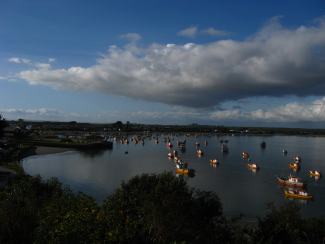Fishers in developing countries do not have the resources to acquire advanced technologies to exploit offshore fish stocks. As a result, the United Nations Convention on the Law of the Sea requires countries to sign partnership agreements with distant water fishing nations (DWFNs) to exploit offshore stocks. However, for migratory stocks, the offshore may serve as a natural marine reserve (i.e., a source) to the inshore (i.e., sink); hence these partnership agreements generate spatial externality.
